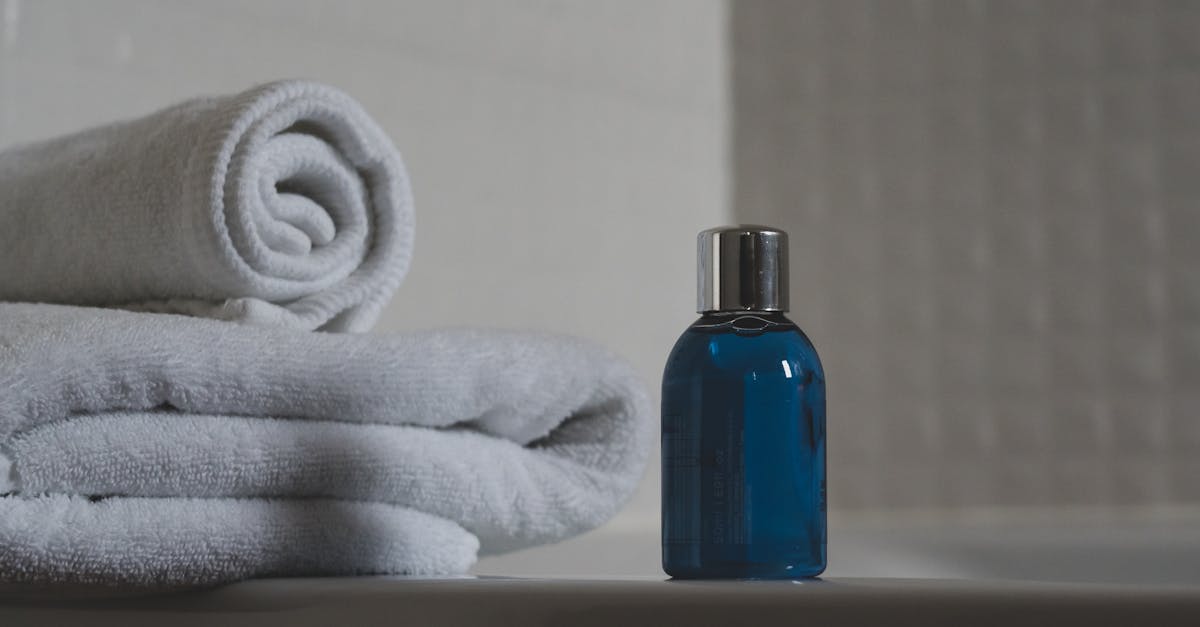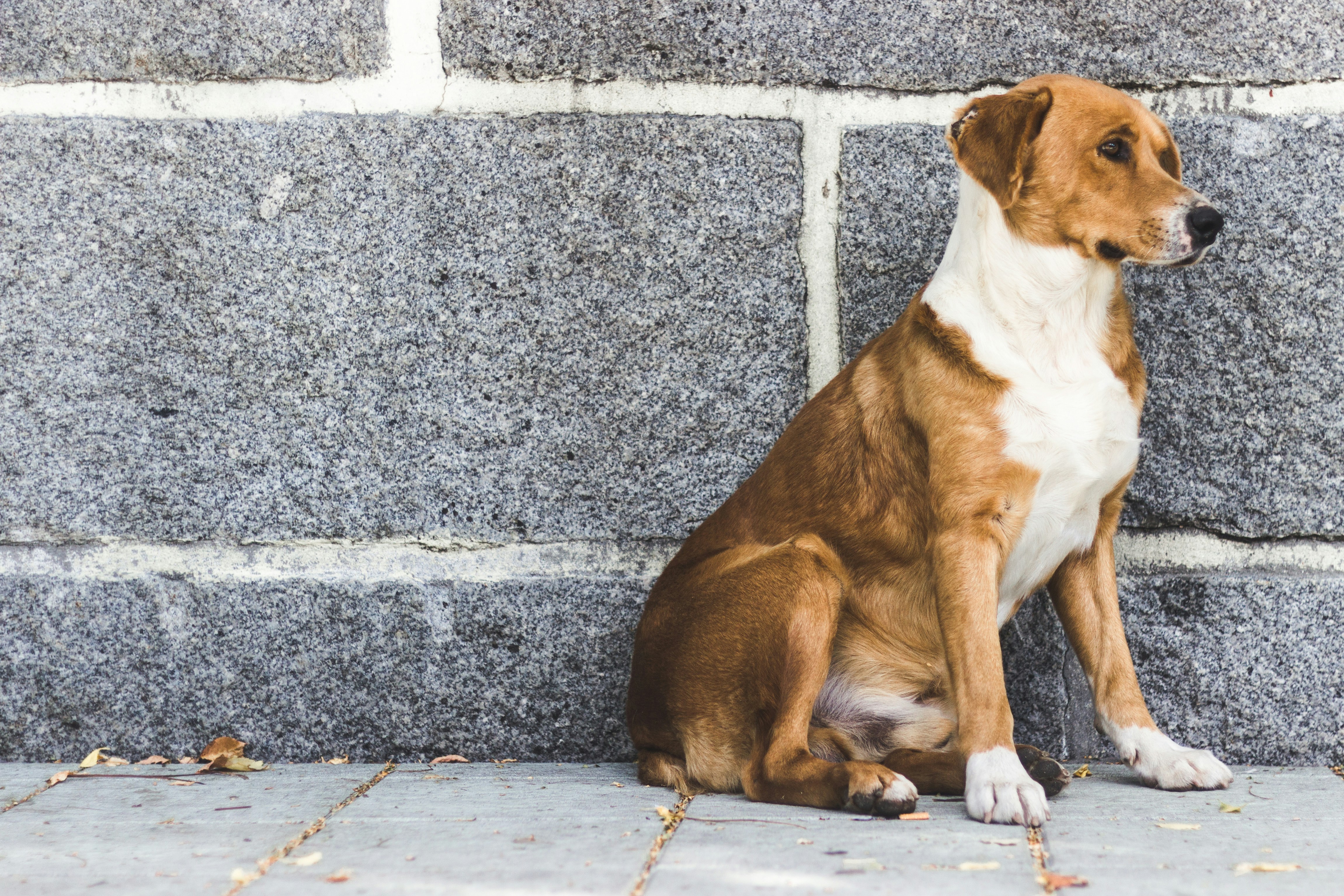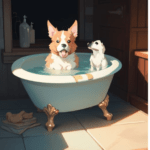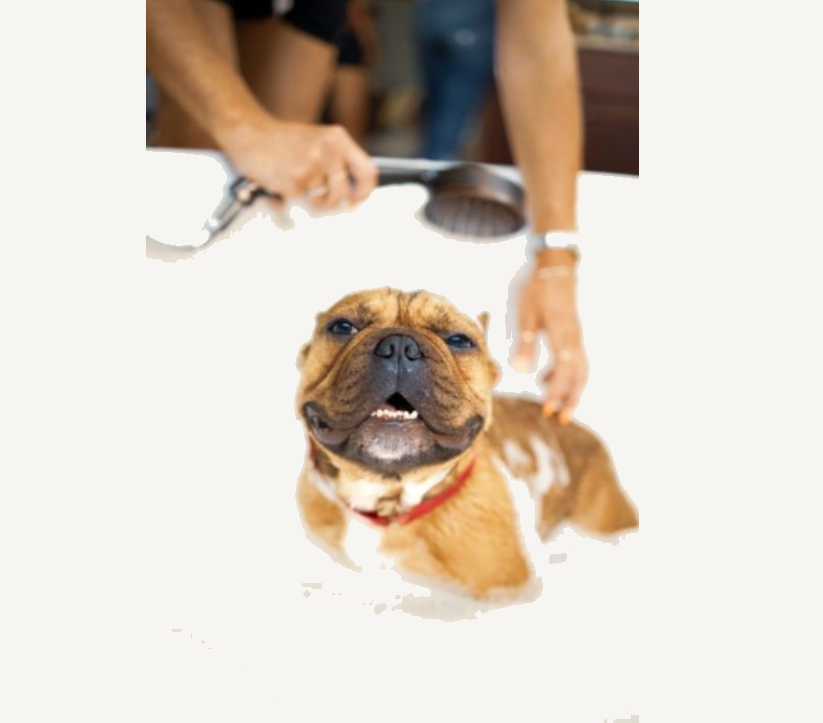
Bathing your dog can sometimes be a daunting task, filled with splashes, suds, and the occasional struggle to keep your furry friend in the tub. But fear not! In this comprehensive guide, we will walk you through everything you need to know about bathing your dog the right way. Say goodbye to bath time battles and hello to a clean and content canine companion.
Have you ever wondered why bath time is so important for your four-legged friend? Beyond just keeping them fresh and odor-free, regular baths play a vital role in maintaining their overall health and well-being. From soothing itchy skin to preventing infections, bathing helps keep their coat healthy, skin moisturized, and allergies at bay. By following our expert tips and tricks, you’ll be able to transform bath time into an enjoyable bonding experience that leaves both you and your pup feeling refreshed.
Why Bath Time is Important for Your Furry Friend
Bathing your dog goes beyond just keeping them clean and smelling fresh. It is an essential part of their overall care and well-being. Regular baths help maintain a healthy coat, prevent skin problems, and promote a happy and comfortable life for your furry companion.
One primary reason why bath time is important is that it helps remove dirt, dead skin cells, and excess oils from your dog’s coat. Just like humans, dogs are exposed to various environmental pollutants that can accumulate on their fur over time. Giving them regular baths ensures that these unwanted substances are washed away, preventing potential skin irritations or infections.
Furthermore, bathing allows you to closely examine your dog’s skin for any abnormalities such as bumps, rashes, or signs of parasites. This hands-on interaction not only helps you detect potential health issues early on but also strengthens the bond between you and your furry friend.
Another significant benefit of bath time is the opportunity to check your dog’s ears and nails. Cleaning their ears regularly helps prevent ear infections caused by wax buildup or moisture retention. Trimming their nails during bath sessions keeps them at a safe length, avoiding discomfort or potential injuries when walking or playing.
Creating a Calm and Positive Bathing Environment
Dogs are highly sensitive creatures who can pick up on human emotions and energy. Therefore, it is crucial to create a calm and positive bathing environment for your furry friend. Start by selecting a location that is familiar to your dog, such as your own bathroom or a designated bathing area.
Before the bath, set the mood by dimming the lights and playing some soothing background music. This will help create a relaxing atmosphere that will put both you and your dog at ease. Additionally, consider using aromatherapy candles or essential oils with calming scents such as lavender or chamomile to further enhance the serene ambiance.
Another essential aspect of creating a positive environment is maintaining a confident and relaxed demeanor yourself. Dogs are highly perceptive, and they can sense if you are nervous or tense during bath time. Take deep breaths, speak in gentle tones, and reassure your pup with soothing words throughout the process.
To further alleviate any anxiety or fear associated with bathing, introduce positive associations with water from an early age. Gradually expose your dog to water by offering treats or praise during playtime near sprinklers, small pools, or even on rainy days. This way, they will start associating water with enjoyment rather than apprehension.
 Preparing for the Doggy Spa Day
Preparing for the Doggy Spa Day
Before immersing your precious pup in a blissful bath, it’s essential to make proper preparations to ensure a stress-free experience. Creating a serene ambiance can work wonders in soothing your canine companion and making them feel comfortable.
Start by selecting the right bathing area. Opt for a warm and well-ventilated space, preferably indoors, where you can maintain control over the environment. Ensure that the room is free of clutter and any potential hazards that could distract or alarm your furry friend.
To set the mood, dim the lights or use soft lighting to create an atmosphere of tranquility. Consider playing some calming music in the background to help soothe both you and your dog during bath time. Remember, a relaxed human handler will transmit positive energy to their canine counterpart.
Additionally, gather all necessary bathing supplies in advance. This includes dog-friendly shampoo, conditioner (if needed), towels, brushes or combs, cotton balls (for ear protection), treats for rewards, and any other tools specific to your dog’s needs. Having everything within arm’s reach will not only save you time but also prevent unnecessary interruptions during bath time.
Choosing the right bathing products and accessories
When it comes to giving your furry companion a luxurious bath, selecting the right bathing products and accessories is essential. Your dog’s skin is delicate, so using gentle yet effective products is crucial for a successful bath time experience.
Start by opting for a high-quality dog shampoo that suits your pup’s specific needs. If your furry friend has sensitive skin or allergies, consider hypoallergenic or medicated shampoos. Always read the labels carefully to ensure the selected product is free from harsh chemicals, dyes, or artificial fragrances that may irritate their skin.
In addition to shampoo, using a conditioner specially formulated for dogs can work wonders for their coat. A good conditioner not only helps with detangling but also adds shine and nourishment to their fur. Look for formulas enriched with natural ingredients like oatmeal or aloe vera, which offer soothing properties.
When it comes to bathing accessories, having a suitable brush or comb handy can make all the difference in maintaining your dog’s coat health. Different breeds have different coat types, so choose brushes that cater specifically to their needs. For example, slicker brushes are excellent for removing tangles in long-haired breeds while rubber curry brushes work wonders on short coats.
The step-by-step guide to a successful bath session
When it comes to bathing your dog, following the right steps will ensure a stress-free and enjoyable experience for both you and your furry friend. Prepare everything in advance, as being organized will help create a positive atmosphere for your dog’s spa day.
1. Brush before bath: Begin by gently brushing your dog’s coat to remove any tangles or mats. This not only helps in preventing further matting but also allows the water and shampoo to reach the skin more effectively.
2. Find the perfect temperature: Test the water before bathing your dog to ensure it is lukewarm, neither too hot nor too cold. Dogs are sensitive to temperature changes, so maintaining a comfortable water temperature is essential for their well-being.
3. Wet thoroughly: Use a handheld sprayer or a cup to wet your dog’s body with water from head to tail. Be careful not to spray directly into their ears or eyes, as this can cause discomfort. Make sure you wet down their entire coat, ensuring all areas are adequately soaked.
4. Apply shampoo carefully: Choose a gentle dog-specific shampoo that suits your pet’s needs (such as hypoallergenic or medicated). Dilute it according to the instructions and apply it generously, starting from the neck and working towards the tail. Massage the shampoo into their coat using gentle circular motions, paying attention to hard-to-reach areas like underarms and paw pads.
5. Rinse thoroughly: Thoroughly rinse off all traces of shampoo using lukewarm water. Residual soap can irritate the skin if left behind, so make sure there are no suds remaining on your pup’s fur.
6. Protect sensitive areas: While bathing, be cautious around sensitive areas such as the ears, eyes, and nose. Use a damp cloth or a gentle pet wipe to clean these areas rather than directly exposing them to water. This will prevent discomfort and reduce the risk of infections.
7. Dry gently: After rinsing, use a clean towel to gently pat your dog’s body and remove excess water. Avoid vigorous rubbing, as this can tangle the fur and cause discomfort. If your dog has long hair, you may consider using a pet-specific hairdryer on a low setting, keeping it at a safe distance from their skin.
8. Reward with love: Throughout the bathing process, offer plenty of praise, encouragement, and treats to reinforce positive behavior. Ending the bath session on a happy note will help your furry friend associate bathing with pleasant experiences.
Remember that each dog is unique in their preferences and sensitivities, so it’s important to adapt these steps accordingly. With patience and consistency, bath time can become an enjoyable ritual that strengthens the bond between you and your beloved companion.
Taking Care of Your Dog’s Sensitive Areas
Bathing your furry friend involves more than just splashing some soapy water all over their coat. It is essential to pay special attention to your dog’s sensitive areas to ensure their comfort and well-being. By approaching these areas with care and gentleness, you can make bath time a positive experience for both you and your beloved pet.
The Ears
When it comes to cleaning your dog’s ears, it is crucial to be cautious and use the appropriate techniques. Begin by examining their ears for any signs of redness, swelling, discharge, or foul odor. If you notice anything unusual, consult your veterinarian before proceeding with the bath.
During the bathing process, it is best to avoid getting water directly into your dog’s ear canal as this can cause discomfort or even lead to an ear infection. To clean the outer part of their ears, use a gentle pet-specific ear cleaner on a cotton ball or pad. Gently wipe away dirt and debris from the visible parts of the ear without inserting anything into the ear canal.
Remember that dogs’ ears vary in shape and size depending on their breed, so take extra care when dealing with floppy-eared breeds like Basset Hounds or Cocker Spaniels. By paying careful attention to your dog’s ears during bath time, you help maintain their overall ear health while ensuring a pleasant experience for them.
The Eyes
Your dog’s eyes are not only windows into their soul but also delicate organs that require proper care during bathtime. Some dogs are more prone to eye irritations or infections due to factors such as breed characteristics or allergies.
To protect your furry friend’s eyes while bathing them, avoid using harsh shampoos or soaps that may cause irritation. Opt for tear-free, mild formulations specifically designed for dogs. When rinsing off the shampoo, be careful to prevent any water or soap from entering their eyes.
If your dog has excessive tearing or discharge from their eyes, gently wipe the area with a clean, damp cloth. However, if you notice any persistent redness, swelling, or unusual discharge, it is best to consult your veterinarian to rule out any underlying issues.
By treating your dog’s eyes with care and ensuring they are comfortable throughout the bath session, you contribute to fostering a trusting bond and making bath time an enjoyable activity for both of you.
Drying techniques for a happy and healthy pup
After a refreshing bath, your furry friend deserves a proper drying session to ensure their comfort and well-being. Here are some essential drying techniques that will leave your pup feeling pampered and looking fabulous.
Towel-drying with care
Once you have finished rinsing off your dog, reach for a soft, absorbent towel to gently remove excess water from their fur. Begin by blotting the wet areas, taking care not to rub vigorously. Remember, rough rubbing can cause tangles or even damage the hair shafts. Instead, embrace a calm and gentle approach that allows the towel to soak up moisture effectively while keeping your pup relaxed and content.
A pro tip for towel-drying is to start from the head and work your way down towards the tail. Pay extra attention to those hard-to-reach places like behind the ears, underbelly, and paws – these areas tend to retain more moisture. Don’t forget to give your furry companion lots of praise and encouragement throughout the process; this positive reinforcement will help create a pleasant association with bath time.
Embracing the power of blow-drying
For dogs with long or thick fur that takes longer to dry naturally or those who simply enjoy being pampered, introducing them to the gentle breeze of a blow dryer can be an excellent option. However, it’s crucial to follow some guidelines for a safe experience.
Firstly, ensure you use a pet-specific blow dryer that offers adjustable temperature settings. Start on low heat and gradually increase if needed while maintaining an appropriate distance from your dog’s fur – this helps prevent overheating or causing discomfort.
Remember not to solely focus on one area for too long; keep moving the blow dryer around to prevent any potential overheating. While blow-drying, use a slicker brush to gently comb through the fur – this not only aids the drying process but also helps prevent tangles and keeps the coat looking nice and shiny.
Exploring alternative drying tools
In addition to towels and blow dryers, there are other tools that can aid in the drying process. One such option is a dog-specific absorbent robe or towel wrap. These specially designed garments are made from quick-drying materials that efficiently soak up moisture while allowing your pup to move comfortably. The wrap-style design ensures that your dog stays covered and warm during the drying process.
Another alternative is using a pet-friendly drying mitt or glove. These gloves have microfiber material on one side, which allows you to gently massage your dog’s coat while simultaneously absorbing water. This method can be particularly useful for dogs who dislike the noise of blow dryers or find them intimidating.
By employing these effective techniques, you can ensure your furry friend has a pleasant post-bath experience while maintaining their health and happiness. Remember, each dog is unique, so observe their reactions and adapt the drying method accordingly to create an enjoyable bonding time for both of you.
Post-bath Pampering and Rewards
Now that your dog is fresh and clean, it’s time to indulge them in some post-bath pampering and rewards. This not only helps reinforce positive behavior during the bath but also creates a special bonding experience between you and your furry friend.
Gentle Massages: After drying your dog, take a few moments to give them a soothing massage. Use gentle strokes along their back, neck, and legs. This not only helps relax your pup but also improves blood circulation and promotes healthy skin.
Toothbrush Time: Seize the opportunity of a freshly cleaned mouth to introduce toothbrushing into your dog’s routine. Choose a toothbrush specifically designed for dogs and use dog-friendly toothpaste. Gentle brushing can help prevent dental issues and keep their breath fresh.
Treat Time: Reward your furry companion with some delicious treats after their bath. High-quality, nutritious treats not only make them happy but also reinforce positive behavior during the bathing process. Treats can be used as positive reinforcements for calm behavior during each step of the bath session.
Cuddles and Playtime: After the pampering session, spend quality time with your pup, cuddling or engaging in playtime activities they enjoy. This reinforces that bath time is followed by fun interactions with you, creating positive associations for future bathing sessions.
Troubleshooting Common Bath Time ChallengesTroubleshooting Common Bath Time Challenges
1. Overcoming Fear and Anxiety
Bathing can be a daunting experience for some dogs, leading to fear and anxiety. The key to overcoming this challenge is gradually introducing your furry friend to the bathing process, making it a positive and rewarding experience. Start by associating bath time with treats and praise, allowing your dog to explore the bathroom before attempting a full bath.
Additionally, use calming techniques such as playing soft music or using lavender-scented candles to create a soothing atmosphere. It’s essential to remain calm and patient yourself, as your dog will pick up on your energy. With time and positive reinforcement, you can help your pup overcome their fears and transform bath time into a relaxing ritual.
2. Dealing with Excessive Shedding
If you find yourself battling an endless supply of dog hair during bath time, fret not! To minimize excessive shedding during bathing sessions, brush your furry friend thoroughly before getting them wet. This will help remove loose fur and prevent it from clogging the drain.
Choosing the right grooming tools is also crucial in reducing shedding. Opt for brushes specifically designed to remove loose hair effectively without causing discomfort or irritation. Regular brushing between baths can further aid in managing shedding by keeping your dog’s coat healthy and tangle-free.
3. Addressing Skin Irritations
Skin irritations can arise during or after a bath due to various factors such as allergies or sensitivities to certain products. A gentle way to address this challenge is by opting for hypoallergenic shampoos specifically formulated for sensitive skin.
Prioritize thorough rinsing to ensure all traces of shampoo are removed, as residue can contribute to irritation. If your dog continues to experience skin problems, consult with a veterinarian who can recommend specialized products or provide guidance on potential underlying issues.
4. Managing Water-Related Anxiety
Some dogs may have an aversion to water or become anxious during bath time. To manage water-related anxiety, introduce your pup gradually to the sensation of water by using a spray bottle or wet washcloth before attempting a full bath.
Consider using a non-slip mat in the bathtub or shower floor to provide stability and reduce anxiety caused by slipping. Distractions such as treats or toys can also help divert your dog’s attention and associate bath time with positive experiences.
Building a Regular Bathing Routine
Consistency is key when it comes to maintaining your dog’s hygiene. Building a regular bathing routine not only keeps your canine companion clean and fresh, but also promotes their overall health and well-being. By following these tips, you can establish a bathing schedule that works best for both you and your furry friend.
Determine the Ideal Frequency
How often should you bathe your dog? The answer depends on several factors, such as their breed, coat type, lifestyle, and any skin conditions they may have. Dogs with longer coats or those that spend more time outdoors may require more frequent baths to prevent matting and remove dirt or allergens. On the other hand, some breeds have natural oils that help keep their coats clean without frequent washing.
To determine the ideal frequency for your dog’s baths, consult with your veterinarian or professional groomer. They can provide valuable insights based on your dog’s specific needs and help you establish a routine that maintains cleanliness while preserving their coat’s natural oils.
Create a Calm Bathing Environment
Making bath time an enjoyable experience is crucial for building a regular routine. Dogs are highly perceptive of our emotions and surroundings, so it’s important to create a calm atmosphere during bathing sessions. Choose a warm room with good lighting away from distractions like noisy appliances or loud music.
Prioritize positive reinforcement by offering treats or verbal praise throughout the process. Introduce relaxing scents like lavender or chamomile into the air to help soothe both you and your dog during bath time. Remember to maintain patience and remain calm if any resistance arises; gentle reassurance goes a long way in establishing trust with your pup.
Gather Essential Supplies
A well-prepared bathing station sets the stage for a successful routine. Gather all necessary supplies before you begin, including dog-friendly shampoo, conditioner (if applicable), towels, a brush or comb suitable for your dog’s coat type, and any other grooming tools specific to their needs.
Organize your supplies in a manner that facilitates easy access and minimizes stress. Keep everything within reach so you won’t need to leave your dog unattended during the bath. This ensures both safety and efficiency throughout the process, allowing you to focus on providing a thorough and enjoyable bathing experience for your furry friend.
Conclusion
In conclusion, by following these tips for bathing your dog the right way, you can transform bath time from a dreaded chore into a bonding experience that both you and your furry friend can enjoy. With patience, preparation, and the right techniques, you can ensure that your dog’s bathing sessions are stress-free and beneficial for their overall well-being. Remember to always approach bath time with a positive attitude and make it a rewarding experience for your canine companion. So go ahead, lather up, and let your pup shine!
 Preparing for the Doggy Spa Day
Preparing for the Doggy Spa Day









